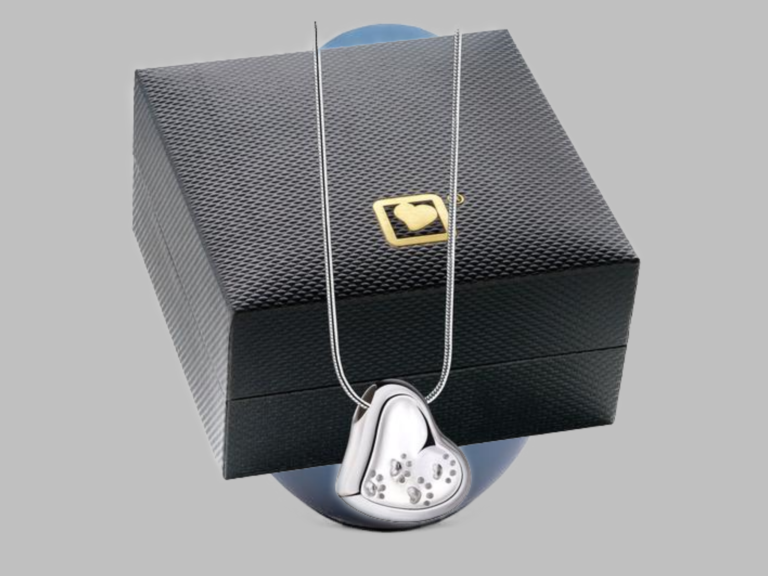For as long as humans have been honouring their deceased loved ones, they have been making and wearing jewellery as a way to remember them.
Remembrance jewellery, as it’s often called, can take the form of a simple ring or pendant with the deceased’s name and date of death on it, or be a more elaborate piece with precious stones that incorporates hair and even cremains. Mourning jewellery is still common today, although it often takes a form that fits more into current styles.
Remembrance Jewellery in Ancient Times
Archaeologists have found a variety of jewellery from centuries ago that incorporates bones and teeth. It’s not clear if these items were made in remembrance of particular individuals, as a mark of status or rank, or perhaps even as a form of protection or to bring luck.
Memorial and remembrance rings can be traced back to Ancient Rome. The Roman elite would remove their gold rings and replace them with iron rings in remembrance of the deceased.
Memorial Rings in the Renaissance
A number of wills written in the Late Middle Ages specifically mention rings as bequests to various important individuals. By the early Renaissance, these mourning rings became more common and were typically paid for by the estate or the heirs of the deceased. During this time, it was customary in some parts of society in England, in particular, to give rings that were inscribed with the name of the deceased and the date of death.
Mourning jewellery is often confused with and can overlap with memento mori jewellery. In fact, there is an argument to be made that remembrance jewellery worn prior to the 17th century should be considered memento mori jewellery – an item worn as a reminder of mortality in general rather than in memory of a specific person. What is clear is that this type of jewellery really reached its peak of popularity during the Victorian Era.
Victorian Mourning Jewellery
Memorial jewellery is most associated with the Victorian Era, specifically after the death of Prince Albert, Queen Victoria’s husband, in 1861. Queen Victoria wore mourning black for decades after his death and set the example for the rest of the country. Black jewellery of all types became fashionable, and memorial jewellery, in particular, became very common – in part due to the shift toward mass production and less expensive materials.
It’s during this period that bereavement jewellery expanded beyond rings to include items like lockets, bracelets, necklaces, and cameos. More expensive items were often made out of jet (a form of fossilized coal), pearls, ivory, and jewels. More affordable alternatives included black enamel or glass.
Hair Jewellery
While hair was used to create memorial jewellery since at least the mid-17th century, it also gained popularity among a wide range of people during Victorian times. Hair jewellery was created by craftsmen who also worked as wigmakers or hair artists, and could be quite expensive. Many women started making their own remembrance jewellery with hair, and various patterns, books, and “starter kits” were available. Hair could be woven into rings, pins, bracelets, and other items.
Modern Memorial Jewellery
Memorial jewellery had fallen out of style by the early 20th century, although memorial rings made a brief comeback in the 1930s and ’40s. Part of the reason behind this may be that the mortality rate had declined considerably from earlier eras.
Although memorial jewellery isn’t the fashion trend that it once was, there are far more options – and more affordable options – than there once were. Today, you can find a wide variety of rings, bracelets, necklaces, lockets, and other remembrance jewellery items, many of which can be engraved. In addition, modern manufacturing techniques allow for fingerprints and photographs to be engraved directly onto jewellery, creating a unique memorial item.
Cremation Jewellery
With the rise in the cremation rate in the past 20 years, there is a growing demand for cremation jewellery.
This type of memorial jewellery includes a small chamber where a pinch of ashes or cremains can be kept. Many people find that this is a wonderful way to honour a loved one who has died and keep them close always. A wide range of cremation jewellery is available, including rings, pendants, and charms.

